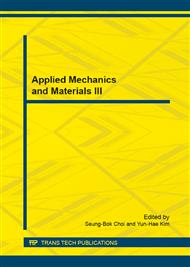p.181
p.186
p.190
p.194
p.198
p.205
p.210
p.215
p.224
A New Type of Joint and its Numerical Analysis
Abstract:
In order to intelligently switch the working status of production string between oil production and testing in the heavy oil thermal recovery, as well as to improve oil exploit efficiency and reduce the exploitation cost, a new transformation joint was designed. Based on the hydraulic fluid controlling principle, caused by the one-way valve opening and closing, the positive and reverse pressure pushed the sealing cylinder to the left or the right. And the transformation between the two states could be achieved. The K-ε model of CFX software was used to simulate the internal flow field of the device under four different opening status of the one-way valve. By analyzing the distributions of pressure and velocity, the energy loss of the device in the oil state was gotten, and the method were found to optimize the design of the flowing channel for reducing the energy consumption. The results show that the design of the device satisfies the operation requirements of thermal recovery, the means to further improve the device is obtained, and it significantly improves the efficiency of measuring oil reservoir parameters.
Info:
Periodical:
Pages:
198-202
Citation:
Online since:
January 2015
Authors:
Price:
Сopyright:
© 2015 Trans Tech Publications Ltd. All Rights Reserved
Share:
Citation:


